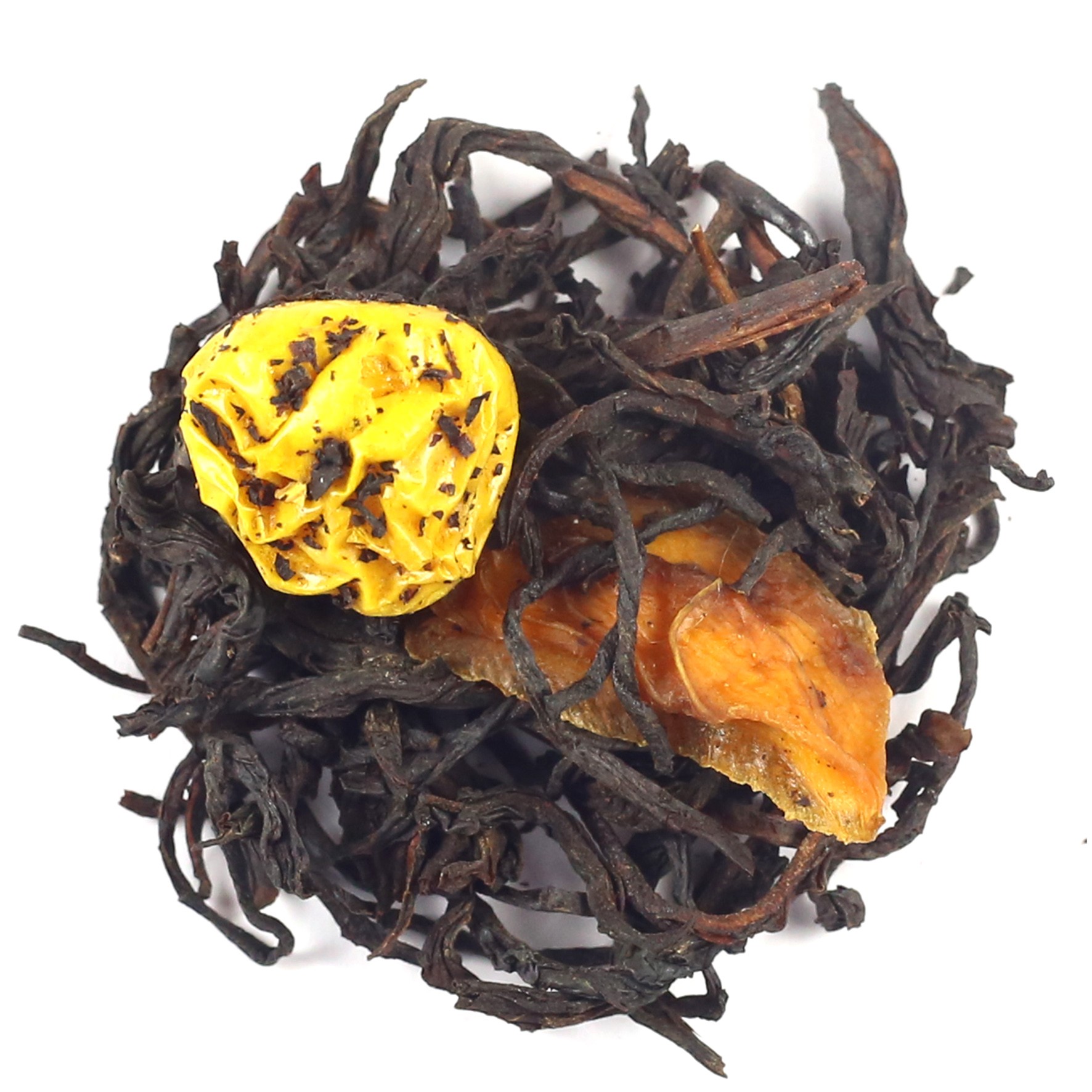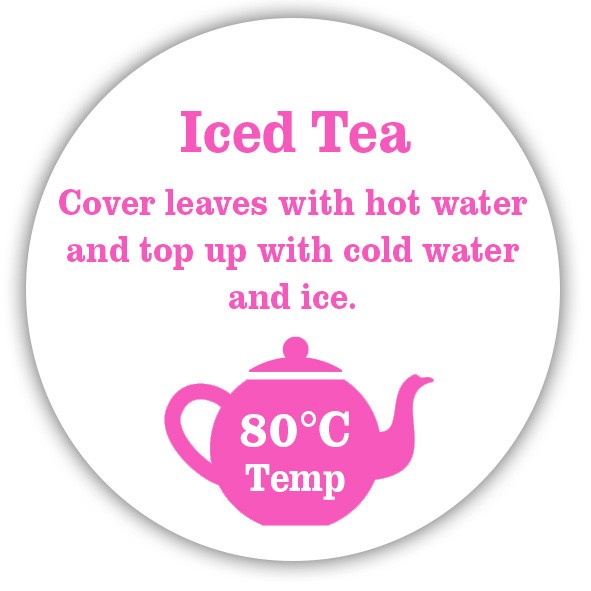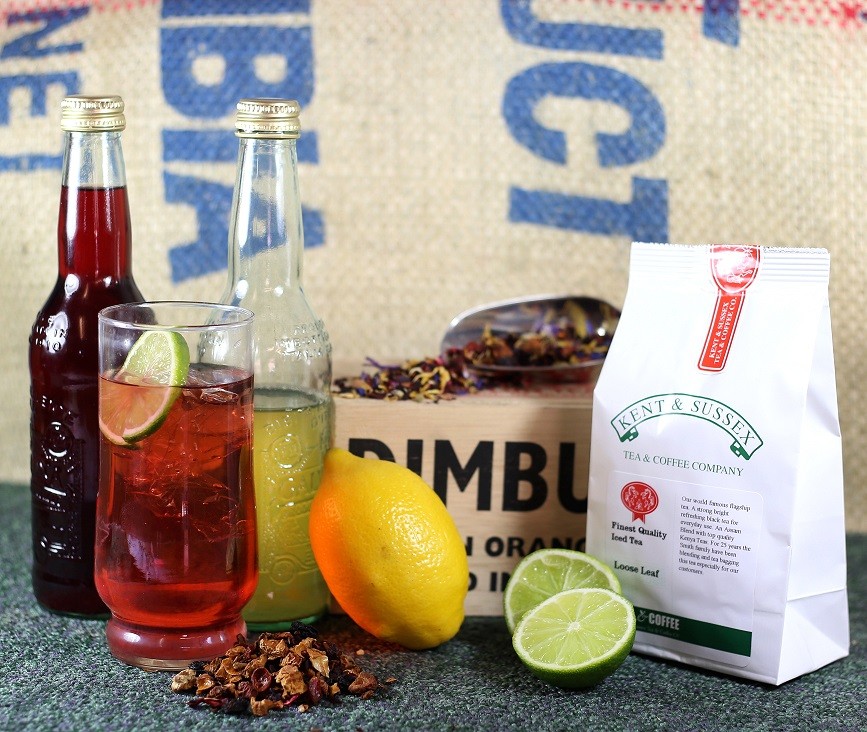Mango and Orange Oolong Iced Tea – Iced Tea – Oolong Iced Tea – Mango Iced Tea
Iced Tea Steps

Tea Guide
Brew your tea as per the tea type guide.

Let it Cool
Let it cool in the fridge for about an hour.

Top it Up
Top up with cold water and add ice cubes.
About Product
-
Product Description
Iced Teas come in many shapes and forms, with this one being made from Oolong Tea! Such is its rarity that this delectable infusion has become increasingly sought after. Mango and Orange Oolong Iced Tea contains a mouthwatering mixture of mango, oranges and kumquats. Its overall taste is citrusy to the last sip, though no less refreshing!
We use Malawian Oolong Tea in the making of this blend. The country is Africa’s second largest producer of Tea after Kenya. Best of all, Oolong Teas to come from Malawi boast a near unmatchable quality, as many connoisseurs will agree. Why not find out for yourself with our very own Mango and Orange Oolong Iced Tea?
The Mystery of Oolong Tea
Outside of legend and speculation, nobody knows for sure how or when precisely Oolong Tea was created. Some suggest its origins date back to as early as the 10th Century CE, while others theorise as late as the 17th and 18th Centuries CE. Alas, we’ll likely never know.
There are, however, some truly fascinating and, at times, enchanting stories of how this remarkable Tea first came into existence. One suggests that it arose through the tradition of offering the Chinese Royal Court so-called “Tribute Teas”. Another suggests that producers first developed Oolong Tea in the Wuyi Mountains of Fujian province, China.
There are also two theories originating from Anxi County, Fujian. Both are similar in many ways, with a farmer dropping a bag of harvested Tea leaves. Depending on the tale, the farmer dropped the leaves either because of a snake or a deer. When he returned, he found that the leaves in his bag had begun to oxidise. Indeed, he had accidentally created Oolong Tea – or so the tales go!
Malawi and Tea
The country’s Tea Industry dates back to 1891. A Scotsman named Henry Brown began experimenting with Tea-growing in Malawi after moving there from Ceylon (Sri Lanka). While in Ceylon, he had grown Coffee, but a plant-based disease had ruined his crop.
The first Tea seeds obtained by Brown came by way of Scottish Missionaries. They, in turn, had received them from the Royal Botanical Gardens in Edinburgh. Brown went on to establish the first successful Tea gardens of Malawi at his estate, located in what was then called Nyasaland (Malawi).
The achievements of Henry Brown saw other aspiring Tea-producers establish plantations in the lowlands of Malanje, and Thyolo in the Shire Highlands.
Today, over 50,000 people work for Malawi’s Tea industry. 51% of the total workforce are women. The peak Tea season starts in October and ends in April when plentiful rain encourages the Tea bushes to flush almost continuously.
Additional Information
Type of Tea: Oolong Tea.
Ingredients: Half-Fermented Malawian Tea, Mango Flakes, Whole Kumquats, Natural Flavouring and Sunflower blossoms.
Brewing Instructions: Using 2 tsp of Tea per person, pour over water of 80 degrees in temperature so that it just covers the loose leaf. Following this, brew for 4 minutes, strain the leaves, and top up with cold water and ice cubes with any personal additions and decoration.
How to Serve: If you prefer a sweeter Iced Tea, then we suggest adding sugar or honey when adding the boiling water.
Tasting Notes: This is a light and delicate Tea complemented with sweet notes of mango and tart notes of kumquats.
Colour in Cup: Amber liquor, light in tone.
Benefits of Mango and Orange Oolong Iced Tea
According to recent statistics, around 25% of the American population is currently prediabetic. Oolong Tea could be the answer. It can regulate the amount of blood sugar and insulin in one’s bloodstream at one time.
In one 2003 study, participants consumed Oolong Tea alongside regular hypoglycemic drugs. This resulted in the balancing of blood sugar levels. It also prevented sudden drops and spikes. The early results appear promising. Drinking Oolong Tea for the reduced risk of type-2 diabetes has shown very encouraging signs. But until we know more, we strongly advise consulting a medical professional.
-
Delivery Information
We offer reliable delivery services through Royal Mail to ensure that your orders reach you on time.
Here are the main points you should be aware of:
- Standard UK Delivery: £3.95 excluding delivery charge.
- Delivery Times: Orders are processed and dispatched within 2-5 working days but they may take longer during busy times. It is worth noting that all our orders are packed by hand in order to maintain the quality.
- Free Delivery: We are delighted to provide free shipping for UK orders over £35*. Moreover, customers from Europe can enjoy free shipping for any purchase above €75*. Furthermore, we offer free delivery in the USA for all purchases exceeding $125*. Please note terms and conditions may apply.
- Tracking: When your package is sent you will receive a tracking number via email so as to keep tabs of its progress.
International Shipping
We do ship worldwide meaning our products can be accessed by anyone around the world.
Here are some important details:
- Delivery Times: International deliveries vary based on destination, generally taking between 7-14 working days.
- Shipping Costs: International shipping costs are calculated at checkout based on your location and weight of your order. View full delivery charges for your location.
- Customs and Import Duties: Remember customs or import duties may exist depending on regulations in your country; these charges are borne by the customer.
Returns Policy
Your satisfaction is our top priority, however if for any reasons you’re not completely happy with your purchase, simply follow our returns procedure:
- Eligibility: Items returned within 30 days of receipt must remain unopened and in their original condition.
- Process: In order to return an item contact our customer service department using your unique order number after which detailed instructions will be given concerning returning them back to us securely.
- Refunds: Our aim is to refund you within 5-7 working days upon successful reception of returned goods. The refund amount will be credited to your original payment method.
For any other Enquiries or help please contact our Customer Support Team always at your service.
-
Product Reviews

 Loose Leaf Tea
Loose Leaf Tea Pyramids
Pyramids Tea Bags
Tea Bags Africa
Africa Assam
Assam Ceylon
Ceylon Chinese
Chinese Darjeeling
Darjeeling European
European Indian
Indian Japan
Japan Nepal
Nepal South East Asia
South East Asia Ayurveda Tea
Ayurveda Tea Black Tea
Black Tea Chai Tea
Chai Tea Flowering Tea
Flowering Tea Fruit Tisanes
Fruit Tisanes Green Tea
Green Tea Herbal Tea
Herbal Tea Matcha Tea
Matcha Tea Oolong Tea
Oolong Tea Organic Tea
Organic Tea Pu erh Tea
Pu erh Tea Rooibos Tea
Rooibos Tea White Tea
White Tea Asian Coffee
Asian Coffee Caribbean Coffee
Caribbean Coffee Central American Coffee
Central American Coffee South American Coffee
South American Coffee Coffee Blends
Coffee Blends Decaffeinated Coffee
Decaffeinated Coffee Espresso Coffee
Espresso Coffee Ethically Sourced Coffee
Ethically Sourced Coffee Flavoured Coffee
Flavoured Coffee Organic Coffee
Organic Coffee Single Origin Coffee
Single Origin Coffee Chocolate 1
Chocolate 1 Chocolate 2
Chocolate 2 Chocolate 3
Chocolate 3 Chocolate 4
Chocolate 4 Chocolate 5
Chocolate 5 Chocolate 6
Chocolate 6 Chocolate 7
Chocolate 7 Chocolate 8
Chocolate 8 Chocolate 9
Chocolate 9 Loose Tea Filters
Loose Tea Filters Tea Accessories
Tea Accessories Tea Bricks
Tea Bricks Tea Caddies
Tea Caddies Tea Caddy Spoons
Tea Caddy Spoons Tea Gift Ideas
Tea Gift Ideas Tea Infusers
Tea Infusers Tea Strainers
Tea Strainers




